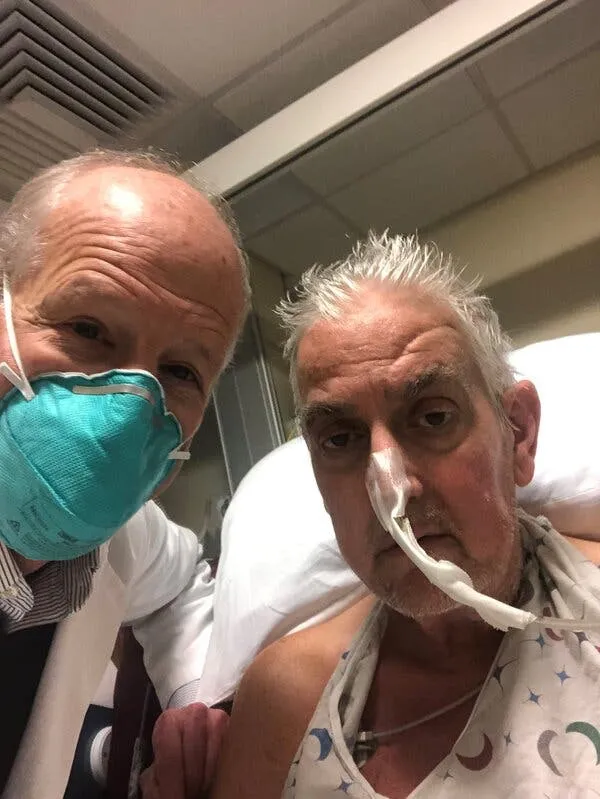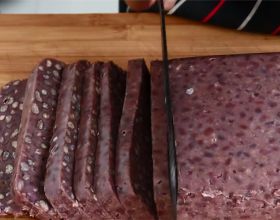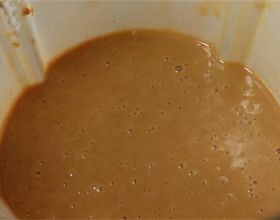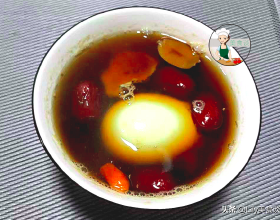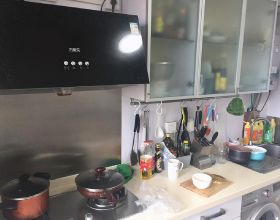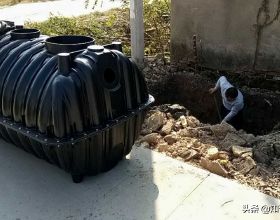In a First, Man Receives a Heart From a Genetically Altered Pig
第一次,人類從轉基因豬那裡獲得一個心臟
The breakthrough may lead one day to new supplies of animal organs for transplant into human patients.
這一項突破可能會導致未來的某一天,人類把動物的其他器官移植到人類患者身上。
A 57-year-old man with life-threatening(危及生命的) heart disease has received a heart from a genetically modified pig, a groundbreaking(開創性的;創新的;個新的) procedure that offers hope to hundreds of thousands of patients with failing organs.
一名患有危及生命心臟病的 57 歲男子接受了來自轉基因豬的心臟,這是一項開創性的手術,為數十萬器官衰竭的患者帶來了希望。
It is the first successful transplant of a pig’s heart into a human being. The eight-hour operation took place in Baltimore on Friday, and the patient, David Bennett Sr. of Maryland, was doing well on Monday, according to surgeons(外科醫生) at the University of Maryland Medical Center.
這是第一次成功地將豬的心臟移植到人體內。 據馬里蘭大學醫學中心的外科醫生稱,這項長達8 小時的手術於週五在巴爾的摩進行,而這位來自馬里蘭州的患者老戴維·貝內特 (David Bennett) 在週一的表現良好。
“It creates the pulse, it creates the pressure, it is his heart,” said Dr. Bartley Griffith, the director of the cardiac(心臟的;心臟病的) transplant program at the medical center, who performed the operation.
“它有脈搏和壓力,這是他的心臟,”任巴特利格里菲斯博士說道。他是醫療中心進行心臟移植手術的主要負責人,也是這次手術的主治醫師。
“It’s working and it looks normal. We are thrilled(激動的;興奮的), but we don’t know what tomorrow will bring us. This has never been done before.”
“這顆心臟正在工作,它看起來無異常,我們因此感到很激動。但我們不知道明天會帶給我們什麼,這項手術是史無前例的。”
Last year, some 41,354 Americans received a transplanted organ, more than half of them receiving kidneys(動物的腰子;腎), according to the United Network for Organ Sharing, a nonprofit(非營利的) that coordinates(協調;使配合) the nation’s organ procurement(器官勸募) efforts.
根據器官共享聯合網路(協調美國器官勸募工作的非營利組織)的資料,去年約有 41,354 名美國人接受了移植器官,其中一半以上是進行了腎臟移植。
But there is an acute shortage of organs, and about a dozen people on the lists die each day. Some 3,817 Americans received human donor(器官捐獻者;獻血者) hearts last year as replacements, more than ever before, but the potential demand is still higher.
然而能移植的器官嚴重短缺,登記在冊的患者中,每天大概有十多個人因為沒有進行移植手術而死去。 在去年,約有 3,817 位美國人接受了來自人類的心臟捐贈,這比以往任何時候都多,但我們要意識到,移植手術的潛在需求仍然更高。
Scientists have worked feverishly(發瘋似地;迫不及待地;興奮地) to develop pigs whose organs would not be rejected by the human body, research accelerated in the past decade by new gene editing(基因剪輯) and cloning technologies. The heart transplant comes just months after surgeons in New York successfully attached the kidney of a genetically engineered pig to a brain-dead person.
科學家們一直在致力於開發豬身上能與人類器官相融合的器官。在過去十年中,新的基因編輯和克隆技術加速了這項研究。 在紐約的外科醫生成功地將一頭基因工程豬的腎臟移植到一個腦死亡的人身上幾個月後,這項心臟移植手術成功進行了。
Researchers hope procedures like this will usher(引導;引領) in a new era in medicine in the future when replacement organs are no longer in short supply for the more than half a million Americans who are waiting for kidneys and other organs.
研究人員希望像這樣的手術能夠在未來開啟一個新的醫學時代。到那時,這超過 50 萬正在等待腎臟和其他器官的美國人已不再短缺替代器官。
“This is a watershed event(分水嶺;大轉變),” said Dr. David Klassen, the chief medical officer of the United Network for Organ Sharing and a transplant physician. “Doors are starting to open that will lead, I believe, to major changes in how we treat organ failure(器官衰竭).”
器官共享聯合網路的首席醫療官兼移植醫師大衛克拉森博士說,這是一個分水嶺事件。 “我相信,這將導致我們治療器官衰竭的方式發生重大變化。”
But he added that there were many hurdles(障礙) to overcome before such a procedure could be broadly applied, noting that rejection(排斥;拋棄;拒絕;否決) of organs occurs even when a well-matched human donor kidney is transplanted.
但他補充說,在這種手術可以廣泛應用之前,還有許多障礙需要克服,並指出即使移植了匹配與人類腎臟高度吻合的器官,也會發生器官排斥反應。
“Events like these can be dramatized in the press, and it’s important to maintain perspective,” Dr. Klassen said. “It takes a long time to mature a therapy like this.”
“像這樣的事件很容易戲劇化地出現在媒體上,因此保持觀點很重要,”克拉森博士說。 “這樣的療法需要很長時間才能走向成熟。”
Mr. Bennett decided to gamble on the experimental treatment because he would have died without a new heart, had exhausted other treatments and was too sick to qualify for a human donor heart, family members and doctors said.
家人和醫生說,貝內特先生,這位已經用盡了其他治療方法,而且由於病情嚴重而沒有資格獲得人類捐贈的心臟的患者,決定在實驗性治療上搏一搏,因為如果沒有新的心臟,他就會死去。
His prognosis(對病情的預斷、預後) is uncertain. Mr. Bennett is still connected to a heart-lung bypass machine, which was keeping him alive before the operation, but that is not unusual for a new heart transplant recipient(接受者;受方), experts said.
他的預後不確定。 專家說,貝內特先生仍然連線著一臺在手術前維持他生命的心肺搭橋機。這對於新的心臟移植接受者來說並不罕見。
The new heart is functioning and already doing most of the work, and his doctors said he could be taken off the machine on Tuesday. Mr. Bennett is being closely monitored for signs that his body is rejecting the new organ, but the first 48 hours, which are critical, passed without incident.
新的心臟正在運作並且已經完成了大部分工作,他的醫生說他可以在週二摘下維持他生命的機器。 貝內特先生正在密切監測他的身體是否有排斥新器官的跡象,至關重要的前 48 小時內目前還沒有出現任何情況。
He is also being monitored for infections, including porcine(像豬的) retrovirus, a pig virus that may be transmitted to humans, although the risk is considered low.
同時,醫生們也對他進行了感染監測,這其中包括了豬逆轉錄病毒,一種可能傳播給人類的豬病毒,儘管風險很低。
“It was either die or do this transplant,” Mr. Bennett said before the surgery, according to officials at the University of Maryland Medical Center. “I want to live. I know it’s a shot(嘗試) in the dark, but it’s my last choice.”
據馬里蘭大學醫學中心的官員稱,貝內特在手術前說,“要麼死了,要麼做移植手術。我想生活。 我知道這是一次在黑暗中嘗試,可這也是我最後的抉擇。”
Dr. Griffith said he first broached(引入) the experimental treatment in mid-December, a “memorable” and “pretty strange” conversation.
格里菲斯博士說,他在 12 月中旬首次提出了實驗性治療,那是一次令人難忘的、非常奇特的一次談話。
“I said, ‘We can’t give you a human heart; you don’t qualify. But maybe we can use one from an animal, a pig,” Dr. Griffith recalled. “It’s never been done before, but we think we can do it.’”
“我說,‘我們不能為你提供一顆人類捐獻的心臟,因為你還沒有資格。 但或許我們可以使用動物身上的,比如豬的心臟,”Griffith 博士回憶道。
“I wasn’t sure he was understanding me,” Dr. Griffith added. “Then he said, ‘Well, will I oink?’”
“我不知道貝內特明白我意思沒有,”Griffith補充道,“接著貝內特說,之後我會學豬哼麼?”
Xenotransplantation((從動物到人體的)異種移植), the process of grafting(嫁接;移植) or transplanting organs or tissues(組織) from animals to humans, has a long history. Efforts to(致力於某事) use the blood and skin of animals go back hundreds of years.
異種移植已經有很長一段歷史了,這種移植就是將動物身上的器官或組織嫁接或移植到人類身體上的過程,而致力於將動物的血液和面板移植到人類身上的研究可以追溯到數幾百年前。
In the 1960s, chimpanzee kidneys were transplanted into some human patients, but the longest a recipient lived was nine months. In 1983, a baboon heart was transplanted into an infant known as Baby Fae, but she died 20 days later.
在 1960 年代,黑猩猩的腎臟被移植到一些人類患者體內,但接受者的最多活到了9個月就去世了。 1983 年,一顆狒狒的心臟被移植到一個名為 Baby Fae 的嬰兒身上,但她也在手術20 天后不幸去世了。
Pigs offer advantages over primates for organ procurements, because they are easier to raise and achieve adult human size in six months. Pig heart valves are routinely transplanted into humans, and some patients with diabetes have received porcine pancreas cells. Pig skin has also been used as a temporary graft for burn patients.
與靈長類動物相比,豬在器官切取上具有優勢,因為它們更容易在六個月內培育並達到成年人心臟的大小。 豬心臟瓣膜常常被移植到人體內,一些糖尿病患者也接受了豬的胰腺細胞移植, 豬皮也被用作燒傷患者的臨時移植物。
Two newer technologies — gene editing and cloning — have yielded(屈服;交出;生產;讓步) genetically altered pig organs less likely to be rejected by humans. Pig hearts have been transplanted successfully into baboons by Dr. Muhammad Mohiuddin, a professor of surgery at University of Maryland School of Medicine who established the cardiac xenotransplantation program with Dr. Griffith and is its scientific director. But safety concerns and fear of setting off a dangerous immune response that can be life-threatening precluded(排除;阻止) their use in humans until recently.
基因編輯和克隆這兩種新技術已經產生了很小几率被人類排斥的轉基因豬的器官。 馬里蘭大學醫學院外科教授 Muhammad Mohiuddin 博士已成功將豬心臟移植到狒狒體內,他與 Griffith 博士建立了心臟異種移植計劃,並擔任該計劃的科學主管。 但直到最近,由於安全問題和對引發可能危及生命的危險免疫反應的恐懼,阻止了它們在人類中的使用。
Dr. Jay Fishman, the associate director of the transplantation center at Massachusetts General Hospital, said that using pig organs provides the ability to perform genetic manipulations, the time to carry out better screening for infectious diseases, and the possibility of a new organ at the time that the patient needs it.
馬薩諸塞州總醫院移植中心副主任傑伊·菲什曼博士說,使用豬器官提供了進行基因操作的能力,提供了更好篩查傳染病的時間和提供了患者需要新器官的可能。
“There are challenges for sure, but also opportunities,” he said.
他表示道,毫無疑問,這存在很多挑戰,但也是機會。
The heart transplanted into Mr. Bennett came from a genetically altered pig provided by Revivicor, a regenerative medicine company based in Blacksburg, Va.
Bennett 先生移植的轉基因豬的心臟,是由弗吉尼亞州布萊克斯堡的再生醫學公司 Revivicor 所提供的。
The pig had 10 genetic modifications. Four genes were knocked out(打出;敲空;(拳擊中)徹底打倒;使失去效能), or inactivated, including one that encodes a molecule that causes an aggressive human rejection response.
這隻豬有10個轉基因, 四個已經失去效能或者被滅活,這其中的一個基因,編碼了一種會引起人類排斥反應的分子。
A growth gene was also inactivated to prevent the pig’s heart from continuing to grow after it was implanted(注入;移植), said Dr. Mohiuddin,who, with Dr. Griffith, did much of the research leading up to the transplant.
與 Griffith 博士一起完成了移植前的大部分研究的Mohiuddin 博士說,以為了防止豬的心臟在移植後繼續生長,生產因子也被滅活。
In addition, six human genes were inserted into(插入) the genome of the donor pig — modifications designed to make the porcine organs more tolerable to the human immune system.
此外,六種人類基因被插入到供體豬的基因組中——旨在使豬器官更能被人類免疫系統所包容。
The team used a new experimental drug developed in part by Dr. Mohiuddin and made by Kiniksa Pharmaceuticals to suppress (抑制;壓制;控制)the immune system and prevent rejection. It also used a new machine perfusion(灌注) device to keep the pig’s heart preserved until surgery.
該團隊使用由 Mohiuddin 博士開發並由 Kiniksa Pharmaceuticals 製造的部分新實驗藥物來抑制免疫系統並防止排斥反應。 另外,他們還使用了一種新的機器灌注裝置來儲存豬的心臟直到手術。
The Food and Drug Administration worked intensely toward the end of the year, finally giving the transplant surgeons an emergency authorization for the operation on New Year’s Eve.
到年底,食品藥品監督管理局加緊工作,終於在除夕前,給移植外科醫生允許進行手術的緊急授權書。
The surgeons encountered a number of unexpected turns.
外科醫生門遇到了許多突如其來的變化。
“The anatomy(解剖) was a little squirrelly(無法保持安靜的;靜不下來的;瘋狂的;發瘋的), and we had a few moments of ‘uh-oh’ and had to do some clever plastic surgery(整形手術;整形外科) to make everything fit,” Dr. Griffith said. As the team removed the clamp restricting blood supply to the organ, “the heart fired right up” and “the animal heart began to squeeze.”
“解剖的過程有一點曲折,我們只有片刻的休息時間,而且不得不做一些巧妙的整形手術來讓二者儘可能地相匹配。”格里菲斯博士說。 當團隊拿掉限制器官血液供應的夾子時,這顆動物的心臟立刻被啟用了,跳躍起來。
When Mr. Bennett first told his son, David Bennett Jr., about the upcoming transplant, he was flummoxed.
當 Bennett 先生第一次告訴他的兒子 David Bennett Jr,他即將進行的移植手術時,他的兒子一頭霧水,還沒有弄清楚是怎麼回事兒。
“At first I didn’t believe him,” the younger Mr. Bennett, who lives in Raleigh, N.C., said. “He’d been in the hospital a month or more, and I knew delirium(譫妄,神志失常,說胡話(常由疾病引起)) could set in. I thought, no way, shape or form is that happening.”
“起初我不相信他,”住在北卡羅來納州羅利的年輕的貝內特先生說。 “他在醫院住了一個月或更長時間,我知道是譫妄發作了。我想,他正在朝這個形式發展,但卻無能為力。”
He said his father had had a pig’s valve inserted about a decade ago, and he thought his father might be confused. But after a while, Mr. Bennett said, “I realized, ‘Man, he is telling the truth and not going crazy. And he could be the first ever.’”
他說他父親大約十年前插入了豬的瓣膜,所以他認為他的父親是糊塗了。 但過了一會兒,貝內特先生說:“我意識到,我的父親說的是實話,他並沒有發瘋。 他可能是第一個做這個手術的人。”

